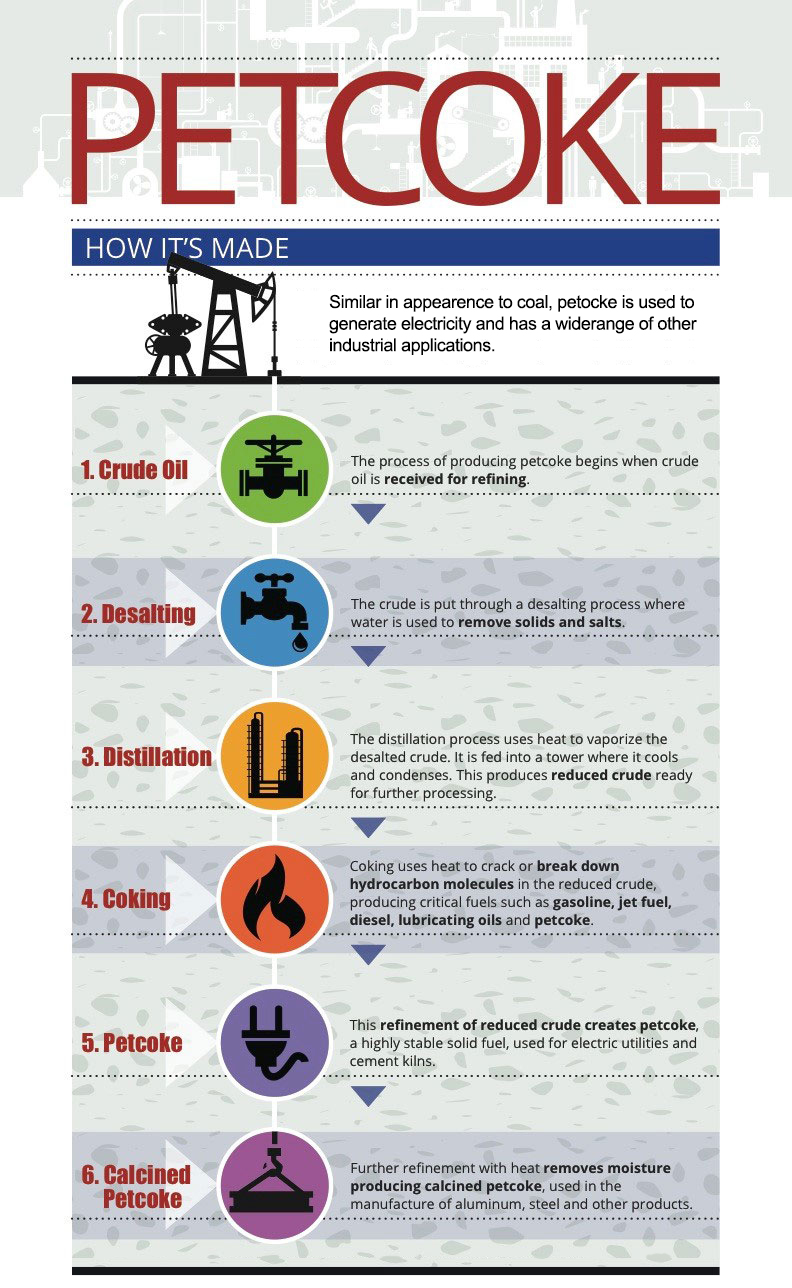Petroleum coke (petcoke) Trading
Petcoke is a byproduct of the oil refining process. Fuel grade petcoke represents roughly 80 percent of worldwide petcoke production.Petroleum coke & Applications
Petroleum coke (petcoke) is a byproduct of the oil refining process. As refineries worldwide seek to operate more efficiently and extract more gasoline and other high value fuels from each barrel of crude oil, a solid carbon material known as petcoke is produced. The physical and chemical characteristics of petcoke are a function of the crude oil and refining technology used by the refinery. Physically, petcoke can be hard or relatively soft. It can resemble large sponges with numerous pores, or it can resemble small spheres, ranging in size from a grain of sand to a large marble. Chemically, petcoke can include a variety of elements and metals in a wide range of concentrations. Depending on these physical and chemical characteristics, petcoke is typically used either in an energy application as a source of British Thermal Units (BTUs), or in an industrial application as a source of carbon.
Fuel grade petcoke represents roughly 80 percent of worldwide petcoke production. Fuel grade petcoke is typically very high in heating value (BTUs per pound), produces virtually no ash when burned, and is most commonly used in electric power plants and cement kilns. Petcoke is over 80% carbon and emits 5% to 10% more carbon dioxide (CO2) than coal on a per-unit-of-energy basis when it is burned. As petcoke has a higher energy content, petcoke emits between 30 and 80 percent more CO2 than coal per unit of weight.The difference between coal and coke in CO2 production per unit of energy produced depends upon the moisture in the coal, which increases the CO2 per unit of energy – heat of combustion – and on the volatile hydrocarbons in coal and coke, which decrease the CO2 per unit of energy. There are at least four basic types of petroleum coke, namely, needle coke, honeycomb coke, sponge coke and shot coke. Different types of petroleum coke have different microstructures due to differences in operating variables and nature of feedstock. Significant differences are also to be observed in the properties of the different types of coke, particularly ash and volatile matter contents. Needle coke, also called acicular coke, is a highly crystalline petroleum coke used in the production of electrodes for the steel and aluminium industries and is particularly valuable because the electrodes must be replaced regularly. Needle coke is produced exclusively from either fluid catalytic cracking (FCC) decant oil or coal tar pitch. Honeycomb coke is an intermediate coke, with ellipsoidal pores that are uniformly distributed. Compared to needle coke, honeycomb coke has a lower coefficient of thermal expansion and a lower electrical conductivity. Fuel-grade coke is classified as either sponge coke or shot coke morphology. While oil refiners have been producing coke for over 100 years, the mechanisms that cause sponge coke or shot coke to form are not well understood and cannot be accurately predicted. In general, lower temperatures and higher pressures promote sponge coke formation. Additionally, the amount of heptane insolubles present and the fraction of light components in the coker feed contribute. Global Trading is uniquely positioned to source the right petcoke for your applications and requirements at competitive prices.
Other Oil Types
EN590
EN590 is the current standard for all automotive diesel fuel sold in the European Union member states. It is published by the European Committee for Standardization and it describes the physical properties of the fuel.
Heavy Fuel Oil
Heavy fuel oil is a residual fuel incurred during the distillation of crude oil. The quality of the residual fuel depends on the quality of the crude oil used in the refinery. A key differentiator of heavy fuel oils is their sulfur content.
Light Cycle Oil
Light Cycle Oil (LCO) is the diesel boiling range material, which is produced in addition to gas and petrol in the Fluid Catalytic Cracking Unit (FCCU). LCO is treated in the diesel hydrotreater (DHT) unit to produce low sulphur
Napha
Naphtha is produced primarily from the distillation of crude oil and is the intermediate product between the light gases and the heavier kerosene. It can also be a component of natural gas condensates.
Light Liquid Paraffin
LLP, Kerosene, or lamp oil is a combustible hydrocarbon liquid which is derived from petroleum. It is widely used as a fuel in aviation as well as households.

